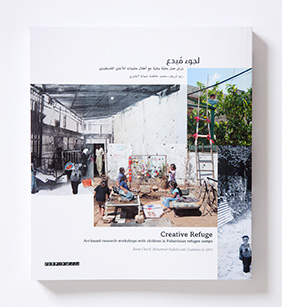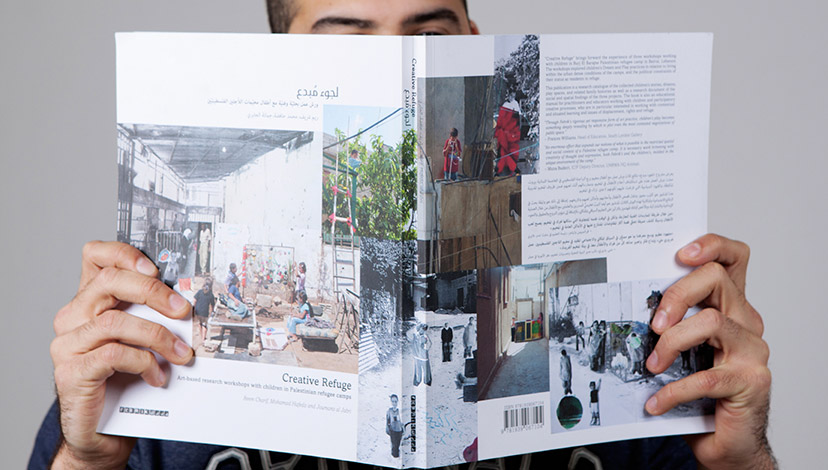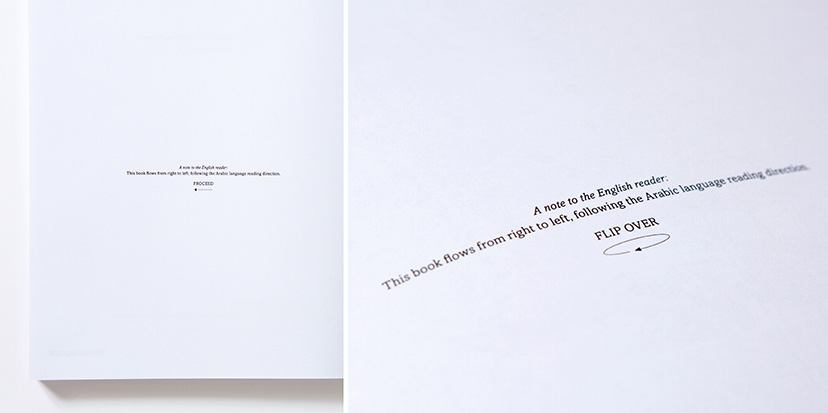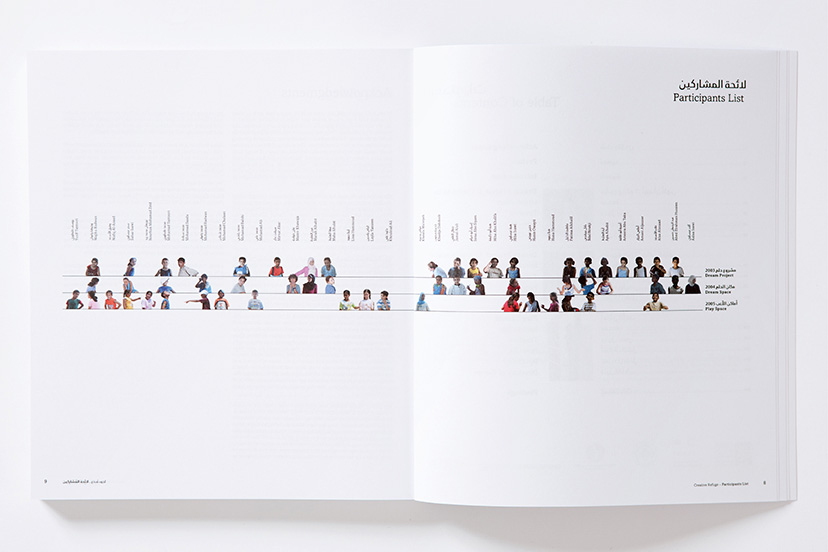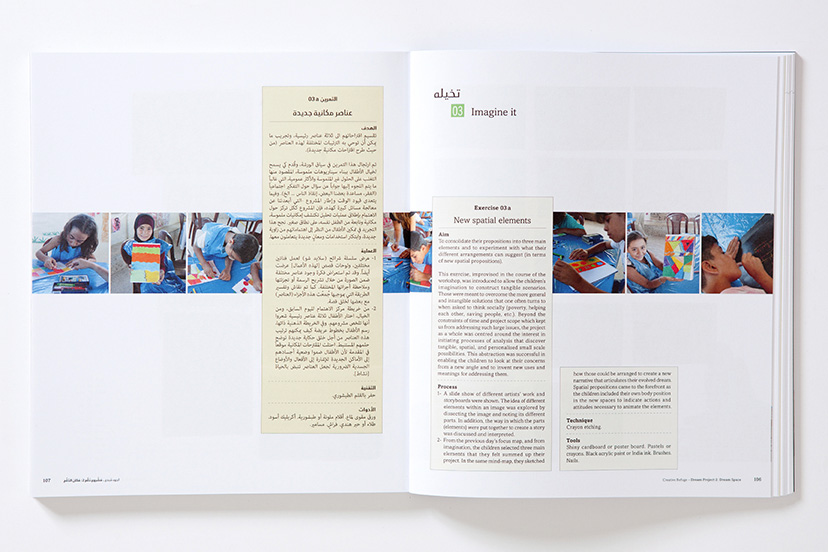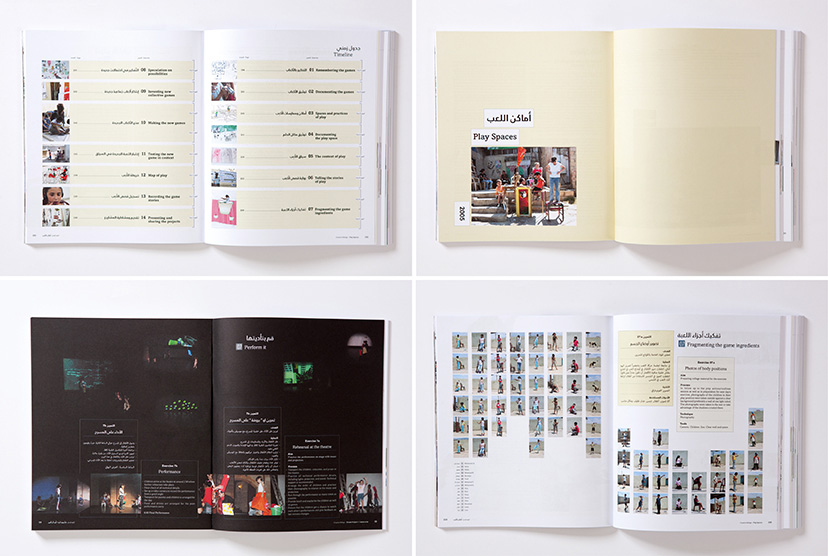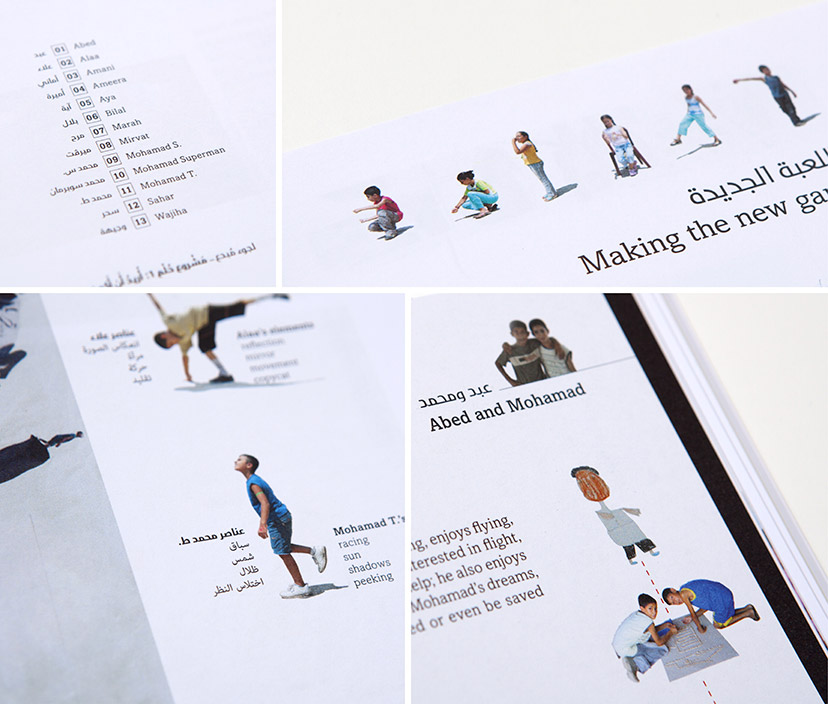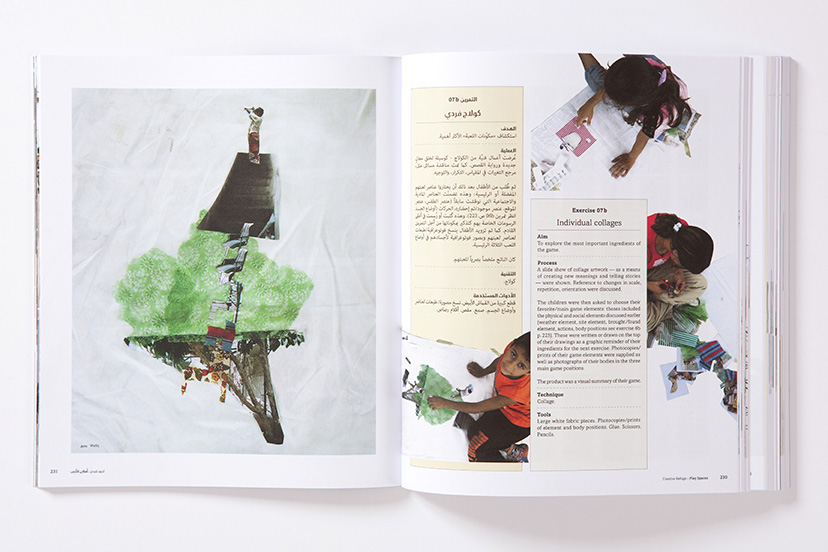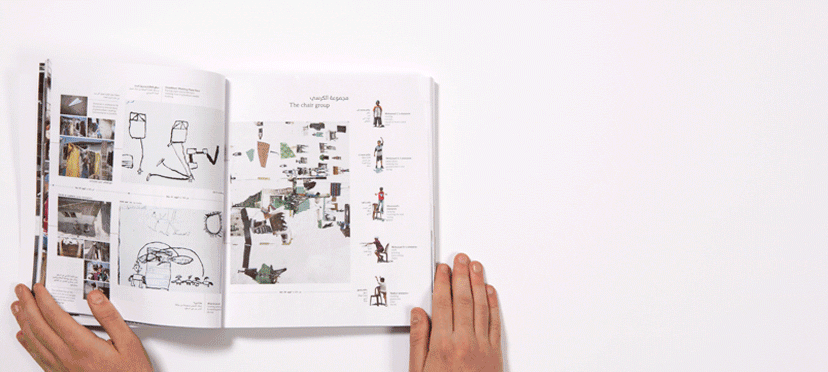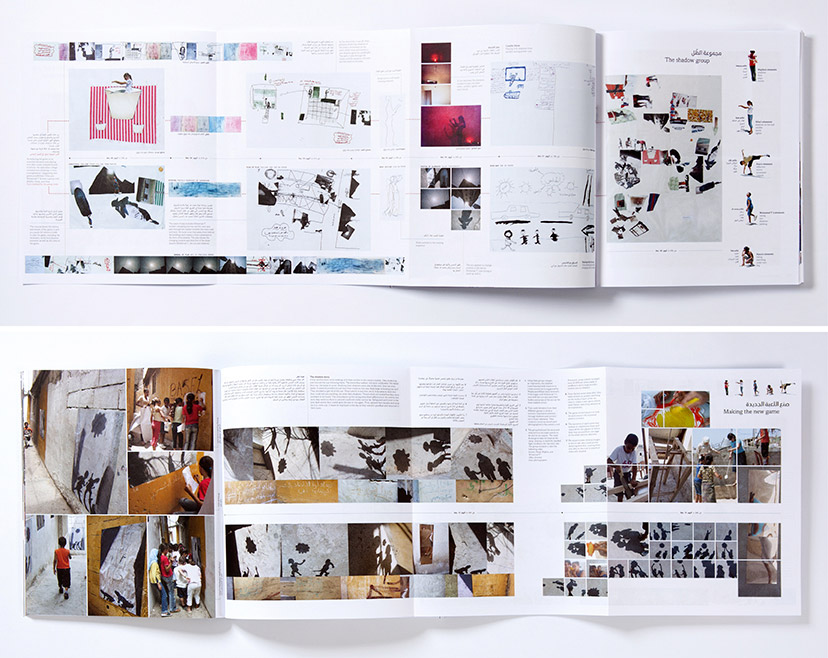This publication by Febrik – a non-profit collaborative platform for participatory art and design – showcases three workshops held for children in Burj El Barajne Palestinian refugee camp in Beirut, Lebanon. The book, designed in collaboration with Ahmad Gharbieh, is part research catalogue, part educational manual, part record of children’s stories, dreams and spaces of play. It covers all three workshops and is set in two languages—Arabic and English. The design challenges of honoring this level of complexity in one book, in addition to the amateur nature of the photography and work documentation, were the kinds of restraints that ultimately opened up the possibilities of layout interpretation. The result is a book that proposes a radical bilingual design solution, incorporates physical departures from the typical book format, and hosts a wide variety of grid structures and playful compositional frameworks that reflect the cut-paste, mix-match, almost unpredictable qualities of a child’s creative mind.
-
Febrik-Cover
A collage of imaginations
The “Creative Refuge” cover brings forward the coming together of children’s inventions and interventions.
-
Febrik-Cover and back cover
The continuation of the collage onto the back cover reveals an extended made-up world, where the space of the camp becomes the sum of bits and pieces of works by the participating children.
-
Febrik-Opening note
The book privileges the Arabic reading direction and prepares the English reader on both ends of the publication.
-
Febrik-Participants page
The stars of “Creative Refuge” are clearly the children of the camp. In this chart at the beginning of the book, they are arranged across the three workshops represented by the three lines, giving a reading of the one, two and three-timers, as well as the total number of children per workshop.
-
Febrik-Spread 01
The educational manual part of the book has fixed elements for each exercise: number and bilingual title, and a kind of a technical step-by-step chart in each of the two languages. These consistent items interact flexibly with the images and introduce a particular fluidity and movement to each spread.
-
Febrik-Layout variations 01
The open chapter breaks, timelined contents pages, gridded thumbnail spreads, and darkened performance sections, are just a few of the eclectic layout treatments in the book.
-
Febrik-Children closeups
Every once in a while, the kids make an appearance in one way or another.
-
Febrik-Spread 02
Certain pages of “Creative Refuge” use the text-image relationship to play with depth, viewpoint and perspective.
-
Febrik-Layout variations 02
With an image library containing everything from work reproductions and participants’ photos to process and space documentation, the book layout structures had to be equally diversified.
-
Febrik-Foldouts 1
At the end of its third chapter, the book proposes an aggregate and condensed reading of the workshop, presented within an extension of the book spread into poster-like fully illustrated diagrams.
-
Febrik-Foldouts 2
The double-sided book extensions follow two children through a timeline of their individual and group works, culminating in an elaborate game tested in the context of the camp.
-
Febrik-Foldouts 3
The spread out pages tell the stories of the final play items created by the children, where sometimes four chairs converged into one or three separate processes led to a single object.



